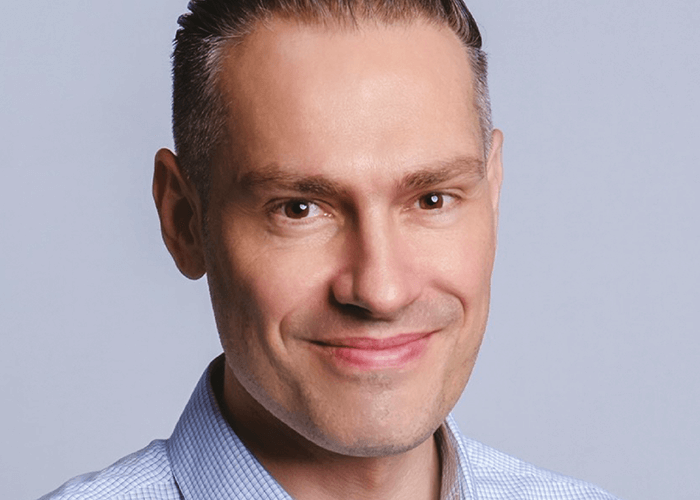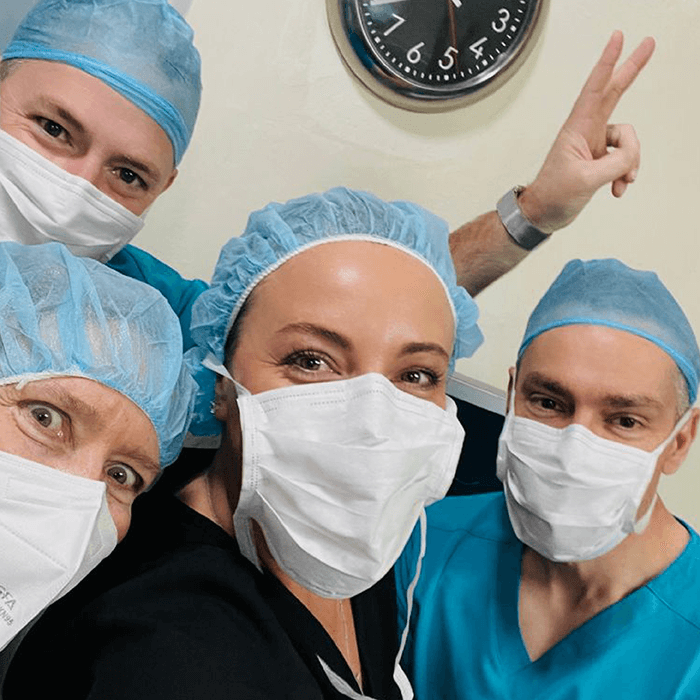
Advanced cell therapies are starting to make their presence felt on the therapeutic landscape across multiple indications. But how could such treatments benefit corneal surgeons and their patients? We spoke to Aurion Biotech’s Chief Scientific Officer, Arnaud Lacoste, to find out.
Tell us about your unusual background…
Even though I now work in the biomedical sciences sector, my childhood dream was to be an oceanographer, which led to me studying oceanography all the way to my PhD. I think it is an amazing area of research, but the real impact you have is limited by the fact that you have to navigate policymakers and, as a result, the political landscape. Oceanographers tend to spend a lot of time doing research that could greatly benefit our lives, but too often it does not turn into impactful policies. And that’s why I moved to biomedical research, with the hope of translating that work directly into improving people’s lives. My work at Novartis enabled me to do just that and provided me the opportunity to work on some fascinating projects, such as the one where we sent mice to the International Space Station so we could explore the effects of zero gravity environments on vision and the optic nerve.
My oceanography background has served me well in my current career. I had to look at biology at extremely large scales – an entire ocean or even the planet – and that forces me to see the bigger picture and then take big problems and break them down into small components that could eventually lead to a solution.
How did you first get involved with cell therapies?
It was through an academic lab at the Rockefeller University in New York, US, between 2006 and 2008 – a time when the stem cell community was creating human embryonic stem cells with the hope of developing cell therapies to address many of the worst diseases affecting people. We were one of the first labs, together with colleagues from Japan and from Harvard, to create induced pluripotent stem cells, which opened one of the doors for the creation of cell therapies. Later, when I joined Novartis, the idea was to start similar platforms there, and create an approach to medicine that used not just pharmaceuticals and classic biologics, but also cell and gene therapies.
What led you to pursue the corneal endothelial cell therapy you’re working on with Aurion Biotech?
When I was working at Novartis, I learned of the pioneering work of Shigeru Kinoshita, in Japan, using corneal cell therapy to treat corneal endothelial dystrophies. His ground-breaking research confirmed that vision could go from being seriously impaired to fully restored, not only demonstrating the concept in animal models, but also pushing these advancements all the way to patients. When I was introduced to Aurion Biotech, naturally I was intrigued: I recognized the opportunity to build a cell therapy program and an organization that could have a significant impact on patients affected by corneal blindness.
What’s the story behind Aurion Biotech?
Several years ago, we were able to acquire the rights to Kinoshita’s technology. In a short period of time, Aurion Biotech has assembled a talented team with deep experience in a variety of areas that include ophthalmology, cell and gene therapies, regulatory, clinical, and commercial development. This experience extends to our new president and chief medical officer, Dr. Michael Goldstein, and our medical advisory board led by Dr. Edward J. Holland – a leading cornea specialist in the field.
Why is a new approach needed – and what makes your technology unique?
Currently, when a patient has corneal endothelial dystrophy, there is not much that can be done in the early stages of the disease. Patients have to wait for the disease to progress – for the cornea’s endothelium monolayer to deteriorate, and for the cornea to thicken and become opaque enough, such that the patient becomes eligible for corneal transplantation (typically, either DMEK or DSAEK). Although these procedures restore vision and generally work quite well, they have a few drawbacks. After surgery, patients are required to stay in bed, face up, for up to three days, which may be extremely uncomfortable, or even physically impossible for some people. Corneal transplants may fail over time, requiring a second procedure. In some cases, patients require a regraft to ensure the graft is properly attached to the cornea. Every corneal transplant requires a corresponding donor cornea, yet a study published in JAMA Ophthalmology cites that for every 70 diseased eyes, there is only one donor cornea available (1). Finally, DMEK surgeries are complex to perform: in the US there are approximately 1,200 corneal specialists, and we at Aurion estimate that only 200-300 of them routinely perform DMEK procedures.
Our cell therapy holds the promise of addressing several of these challenges. Right now, we can produce corneal endothelial cells in the lab, enabling us to treat at least 100 eyes from one donor, which can significantly increase the “supply” of treatment options for patients. We hope to be able to get into the thousands with technological improvements and continued innovation in our labs. This will have exciting implications, especially for patients in developing countries who currently can’t readily access cornea tissue.
Next, our KOLs believe that this cell therapy procedure is less complex than DSAEK or DMEK. After removing the diseased endothelium, the surgeon injects a solution of corneal endothelial cells grown in a lab from donated corneas, along with a rho kinase inhibitor. The injected cells reform the endothelial monolayer within the cornea. Post-op recovery is faster, with the patient only required to lie face down for three hours. Within weeks, patients can progress from impaired vision to improved vision. It’s very rare in medicine that you can take a patient from a very bad state to such an improvement with a single procedure; very often physicians can only slow down the progression of a disease. Being able to support the development of this cell therapy is one of the most incredible experiences of my career.
When will the therapy be available? Do you foresee any challenges?
This year, Aurion Biotech submitted an NDA to the Japan PMDA. It is our hope that regulatory approval for market launch in Japan will occur sometime in 2023. In the US, we are in the process of preparing to submit an IND to the FDA in order to initiate clinical trials. We are in a good place, however, because, unlike many other biomedical science programs, we’re approaching the regulatory process with the benefit of having clinical experience with patients. To date, including our work in Japan and in OUS studies in El Salvador, we’ve treated more than 100 patients. We are eager to bring this technology to patients throughout the world.
How do you see the cell therapy field evolving?
Cell therapies have been around for a long time, if we consider that blood transfusions were the first cell therapy. By the beginning of the 2000s, scientists had gotten much better at cultivating cells to turn into cell therapies, but very little has made its way to patients even now, in 2022. I think that is beginning to change. There are some amazing initiatives that are beginning to change the treatment landscape, such as Kymriah®, which we delivered at Novartis for treating leukemia, and the promising clinical results from Semma Therapeutics’ cell therapy for treating diabetes. It is a rising tide; cell therapies are starting to have an impact on patient outcomes.
At Aurion Biotech, we continue to look into conditions that affect the cornea, as it’s a natural space for us: we have a great platform here and great relationships within the ophthalmic community. We hope to apply the principles and technology that we have outlined with this project to other corneal diseases, and – in time – perhaps even other diseases of the eye, such as the treatment of retinal degeneration and glaucoma.

References
- P Gain et al., “Global survey of corneal transplantation and eye banking,” JAMA Ophthalmology, 134, 167 (2016). PMID: 26633035.
